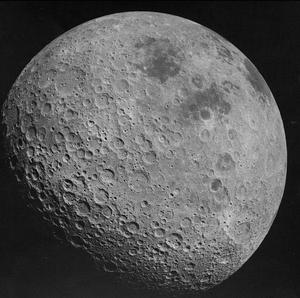Glossary term: Cratere
Description: Un cratere è una depressione circolare sulla superficie di un pianeta solido, di una luna o di un altro piccolo oggetto nello spazio. Alcuni crateri sono vulcanici, soprattutto sulla Terra e su Venere, ma la maggior parte sono crateri da impatto, causati dall'impatto di una grande roccia spaziale o di un nucleo di cometa. Ci sono decine di crateri da impatto sulla superficie della Terra e migliaia sulla Luna. I mari lunari, le grandi macchie circolari più scure sulla Luna, sono giganteschi crateri da impatto, formatisi miliardi di anni fa e poi riempiti di lava, che si è poi solidificata.
Related Terms:
See this term in other languages
Term and definition status: The original definition of this term in English have been approved by a research astronomer and a teacher The translation of this term and its definition is still awaiting approval
The OAE Multilingual Glossary is a project of the IAU Office of Astronomy for Education (OAE) in collaboration with the IAU Office of Astronomy Outreach (OAO). The terms and definitions were chosen, written and reviewed by a collective effort from the OAE, the OAE Centers and Nodes, the OAE National Astronomy Education Coordinators (NAECs) and other volunteers. You can find a full list of credits here. All glossary terms and their definitions are released under a Creative Commons CC BY-4.0 license and should be credited to "IAU OAE".
Related Media
Cerere
Credit: NASA / JPL-Caltech / UCLA / MPS / DLR / IDA / Justin Cowart
License: CC-BY-2.0 Creative Commons Attribuzione 2.0 Generico icons
Related Activities
Impact Craters
astroEDU educational activity (links to astroEDU website) Description: A literal Earth-Shattering experimentLicense: CC-BY-4.0 Creative Commons Attribuzione 4.0 Internazionale (CC BY 4.0) icons
Tags: History , Impact , Experiment Age Ranges: 10-12 , 12-14 , 14-16 Education Level: Middle School , Primary , Secondary Areas of Learning: Guided-discovery learning , Modelling , Traditional Science Experiment Costs: Low Cost Duration: 1 hour Group Size: Group Skills: Analysing and interpreting data , Asking questions , Constructing explanations , Engaging in argument from evidence , Using mathematics and computational thinkingMeteoroids, Meteors and Meteorites
astroEDU educational activity (links to astroEDU website) Description: Unveiling the mystery of "shooting stars": meteors, meteorites and meteroidsLicense: CC-BY-4.0 Creative Commons Attribuzione 4.0 Internazionale (CC BY 4.0) icons
Tags: Geology Age Ranges: 6-8 , 8-10 , 10-12 , 12-14 Education Level: Middle School , Primary Areas of Learning: Interactive Lecture Costs: Low Cost Duration: 1 hour 30 mins Group Size: Group Skills: Analysing and interpreting data , Asking questions , Communicating information , Engaging in argument from evidenceAge that crater!
astroEDU educational activity (links to astroEDU website) Description: Learn how to age craters with this Predict, Explain, Observe, Explain Activity!License: CC-BY-4.0 Creative Commons Attribuzione 4.0 Internazionale (CC BY 4.0) icons
Tags: Craters , Game , Maps , Geology Age Ranges: 4-6 , 6-8 , 8-10 Education Level: Middle School , Primary Areas of Learning: Observation based , Social Research Costs: Low Cost Duration: 1 hour Group Size: Group Skills: Asking questions , Communicating information , Constructing explanations , Developing and using models , Engaging in argument from evidence











